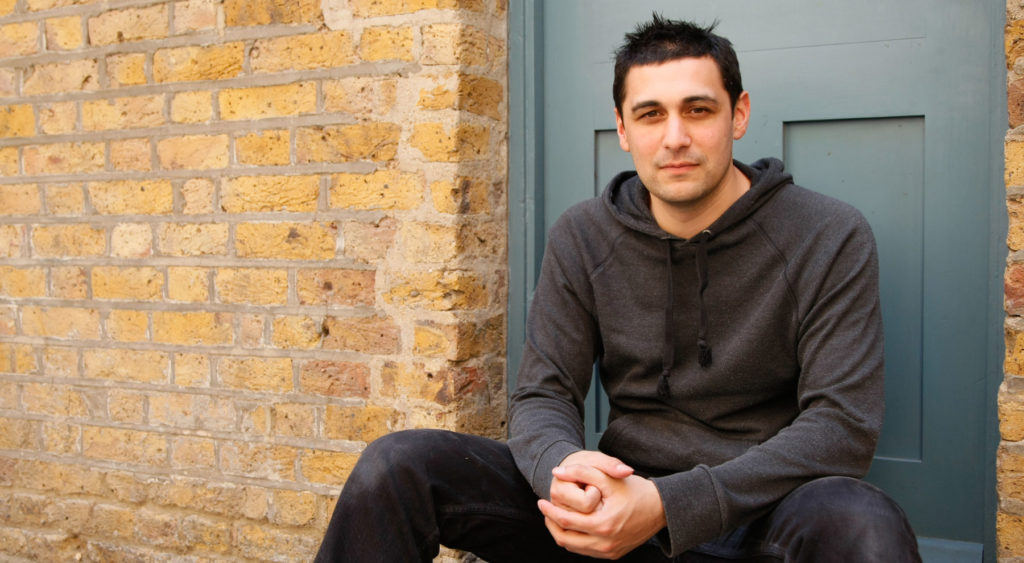
Knowing that NASA would soon cease operating its shuttles, Nature’s video team decided to create a music video showing each flight in chronological order. What began as a labor of love soon descended into months of slogging through VHS tapes, but the final product scored some 80,000 hits in its first week online. Here, team leader Adam Rutherford tells Alexandra Witze the story behind the video. (This interview has been edited for length and clarity.)
How did you come up with the idea?
About 18 months ago we were starting to think about how to deal with the shuttle’s retirement. We thought we should do a tribute video. And what would be more fun than putting them all in order?
In some ways it’s an editor’s dream because every flight path is effectively identical—these things are choreographed to the minute. It’s like you have a universal camera, where you can cut from many different angles to the same event, even though they’re separated by time.
Where’d you get the footage?
NASA said we could have access to all their archives back to 1981. Then they revealed their archives were on VHS. My editor described it as man’s greatest achievement recorded on the world’s shittiest format.
NASA would release only 15 tapes at a time. We started this process of getting 15 tapes sent up to the New York office, where the editor would take them to a digitizer in Brooklyn and get them all transferred, then send them back and get the next batch sent up. That was our lives, sporadically, over several months. We’d go through hours of footage to get a few seconds’ worth.
How did you decide to structure the film?
We knew that up until the Challenger disaster, all of that section of film would be an upwards trajectory. So we didn’t have to look at all the landings for the first 26 missions. And then we knew we wanted some of the best shots in orbit, some of the most stunning zero-g shots and the launch of Hubble and Ulysses. And we wanted some of the most fun things. Our video is cut in such a way as to look as if the astronauts were having a good time. The first cut really fetishized the spaceship, and we wanted to move slightly away from that and make it as much as possible about the people.
How did you choose the music?
I wanted some rousing anthemic music that captured the triumphal spirit of this project. There is a place for proper criticism of the space shuttle program, but what we made is not part of that. What we made is a celebration and a tribute.
I’m in my mid-30s now and have kids, so I have no idea about music. So I asked Twitter to give me examples of modern soaring triumphal music, and they suggested 65daysofstatic. I contacted them and they turned out to be massive space nerds. They remixed the tracks for us and gave us their video editor.
How did you fit it all together?
The whole trajectory of the film and the space shuttle program is punctuated by these two key events, Challenger in 1986 and Columbia in 2003. We spent a lot of time thinking about how to deal with these not mawkishly. The first cut we did was up to Challenger. For the second cut we went from return to flight to Columbia. What worked best was having Reagan and his incredible post-Challenger Oval Office speech. Then the second return to flight to STS-135 [the final flight] on is on a downward trajectory.
We had around 100 hours of footage, and there are around 240 cuts in the film. Every mission in order is labeled from STS-1 to STS-135. What isn’t labeled isn’t necessarily in sequential order. Otherwise it would have been a much less artful film.
You must have put in the final shuttle landing at the last moment.
That was quite panicky, to be honest. We had the film fully cut except for the last three seconds. The Nature office was pretty excitable as Atlantis started coming back into the atmosphere. We had three computers set up recording NASA’s live stream, and another computer recording the audio from Capcom. We finished editing about an hour and a half after wheel stop, and then it’s all just technical guff, which took absolutely ages.
What’s your favorite clip?
The return to flight after Columbia, with the camera mounted on the main solid rocket booster as it separates and you see the shuttle pull away and begin to enter its first orbit. It really looks like it’s CGI. It’s better than anything George Lucas has ever managed, and it’s real. My second favorite is the triptych, the three shots of the shuttle doing its belly roll. I also absolutely love the shot of the first Mir/shuttle docking when they open the airlock and the captain and the cosmonauts give each other the most sincere bear hug possible. There’s no insincerity there at all, just pure joy. That’s how I feel about spaceflight.
How do you look back on this project?
I say this with no hubris at all—I think this is the best idea I’ve ever had. It’s the most personal project I’ve ever done. There were a number of times where the footage brought tears to our eyes. I know a lot of blokes like this and women too, who feel a great emotional attachment to space exploration. It’s a love letter.
Have you ever been to a launch?
Nope. And now I never will.

Alexandra Witze is a contributing editor at Science News and freelance science writer in Boulder, Colorado. She is a recipient of the National Association of Science Writers’ Science-in-Society Award, the American Geophysical Union Walter Sullivan award for excellence in science journalism (features), and other honors. Follow Alex on Twitter @alexwitze.


